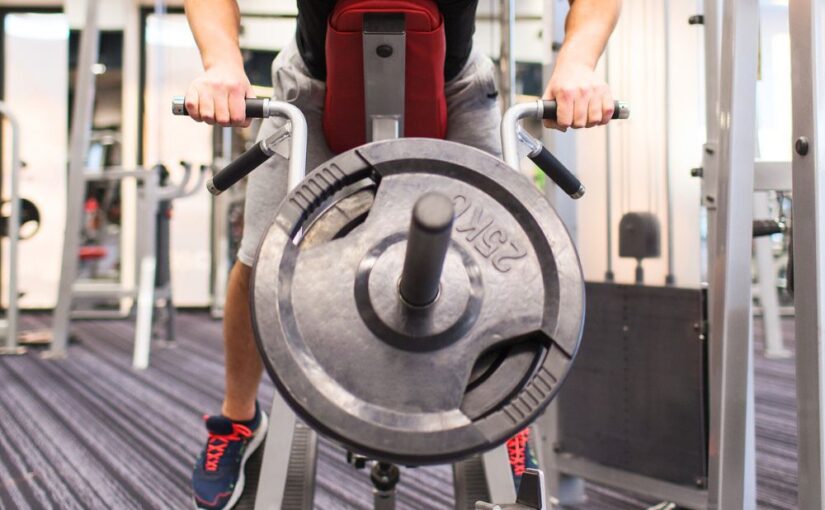When it comes to building a strong back, both the chest-supported T-bar row and the traditional T-bar row are excellent choices. Each variation offers unique benefits and targets the muscles in slightly different ways. In this article, we’ll explore the differences between these two exercises to help you decide which one is best for your training routine.
1. Muscle Targeting
- Chest-Supported T-Bar Row: This variation emphasizes the upper and middle back, specifically the rhomboids, trapezius, and lats. The chest support reduces the involvement of the lower back, allowing for better isolation of the upper back muscles.
- Traditional T-Bar Row: The classic T-bar row targets the entire back, including the lats, traps, and lower back. It engages more stabilizing muscles, as the lifter must maintain balance throughout the movement.
2. Range of Motion
- Chest-Supported T-Bar Row: The support provided by the bench allows for a controlled range of motion, helping to ensure proper form and maximizing muscle engagement. This setup can promote a deeper contraction of the back muscles.
- Traditional T-Bar Row: The range of motion in a traditional T-bar row can vary depending on the grip and stance. This variation can lead to greater overall muscle activation, but it may also require more attention to form to avoid strain.
3. Equipment and Setup
- Chest-Supported T-Bar Row: This exercise typically requires a T-bar row machine with a chest support feature. It’s often found in more specialized gyms, making it less accessible than the traditional T-bar row.
- Traditional T-Bar Row: The equipment needed for a traditional T-bar row is relatively simple, requiring just a barbell and a landmine attachment or T-bar row station. This makes it more widely available and easier to set up in most gyms.
4. Safety and Stability
- Chest-Supported T-Bar Row: The chest support stabilizes the upper body, which can help reduce the risk of injury and allow for a stronger focus on the back muscles. This makes it an excellent choice for anyone with lower back problems.
- Traditional T-Bar Row: While effective, the traditional T-bar row can place strain on the lower back if not performed correctly. It requires good core stability and proper form to minimize injury risk.
5. Training Goals
- Chest-Supported T-Bar Row: Ideal for those focusing on upper back development and looking to isolate back muscles without straining the lower back. This variation is particularly beneficial for rehabilitation or as a complementary exercise in a well-rounded routine.
- Traditional T-Bar Row: Better suited for those aiming for overall back strength and hypertrophy. This exercise engages multiple muscle groups and can be a staple for anyone looking to build mass in their upper body.
Chest-Supported T-Bar Row vs Traditional T-Bar Row
| Category | Chest-Supported T-Bar Row | Traditional T-Bar Row |
|---|
| Muscle Emphasis | Focuses on upper and middle back (rhomboids, traps, lats) | Engages full back including lower back and core stabilizers |
| Lower Back Load | Minimal, thanks to chest support | Moderate to high—requires strong core and proper form |
| Range of Motion | Controlled, stable range promoting strict form | Greater variability depending on grip and stance |
| Equipment Needed | Specialized machine with chest support | Barbell and landmine or T-bar row handle |
| Accessibility | Less common—found in specialized gyms | Widely available in most commercial or home gyms |
| Stability | High—bench support removes need for torso stabilization | Lower—requires lifter to stabilize entire body |
| Ideal For | Muscle isolation, rehab, avoiding lower back strain | Overall strength, mass-building, functional pulling power |
| Injury Risk | Low, especially for those with lower back concerns | Higher if performed with poor form or excessive weight |
Conclusion
Both the chest-supported T-bar row and the traditional T-bar row are effective exercises for back development, but they serve different purposes. If you’re looking to isolate your upper back and minimize lower back strain, the chest-supported variation is a great choice. On the other hand, if you want to engage a broader range of muscles and focus on overall back strength, the traditional T-bar row may be more suitable.
Incorporating both exercises into your routine can provide a balanced approach to back training. Assess your fitness goals, available equipment, and any physical limitations to determine which exercise fits best in your workout regimen. Regardless of your choice, both can lead to a stronger, more defined back!
Frequently Asked Questions (FAQ)
The chest-supported variation uses a bench to stabilize your torso, helping you target the upper back muscles more effectively while minimizing stress on the lower back. The traditional version requires you to stabilize your body, engaging more muscle groups including the core and lower back.
The chest-supported T-bar row is generally better for beginners, as it provides more stability and reduces the risk of lower back strain.
Yes, incorporating both can provide a balanced approach—use the chest-supported row for strict isolation and the traditional version for building overall strength and muscle mass.
The chest-supported version is safer for individuals with lower back problems because it removes spinal loading by supporting the chest.
They both target similar back muscles—like the lats, traps, and rhomboids—but the traditional version also heavily involves the lower back and core due to the unsupported position.
Recommended Equipment for Your Back Training Routine
To get the most out of your back workouts, consider adding the following pieces of equipment to your setup. These accessories can enhance your T-bar row experience and take your training to the next level:
Seated Row Machine
A high-quality seated row machine is perfect for isolating your back muscles. It offers a secure and comfortable platform to effectively target the lats, traps, and rhomboids.
Landmine Attachment
A landmine attachment allows you to perform traditional T-bar rows with ease. It’s a multi-purpose piece of equipment that can be utilized for various exercises, such as the landmine press, single-arm rows, and rotational movements, to boost your training.
Barbell Set
A reliable barbell set is essential for performing traditional T-bar rows. Look for a set that includes multiple weight options to customize your resistance and track your progress.
Pull-Up Bar
Pull-up bars complement your back training routine by helping you target the lats and rhomboids. They’re great for adding variety and improving overall back strength.
Adjustable Weight Bench
An adjustable weight bench is key for performing chest-supported T-bar rows. Its ability to set different angles allows you to tailor the support to your needs for better isolation of the upper back muscles.
Affiliate Disclaimer
The above links are affiliate links, which means that at no additional cost to you, we may earn a small commission if you make a purchase through these links.

